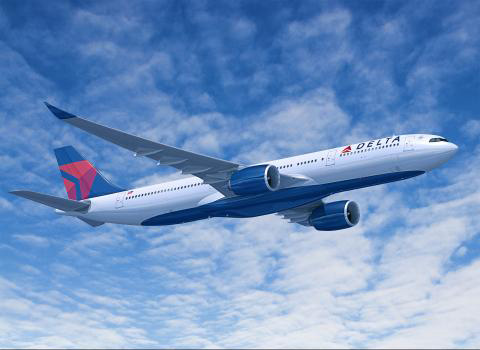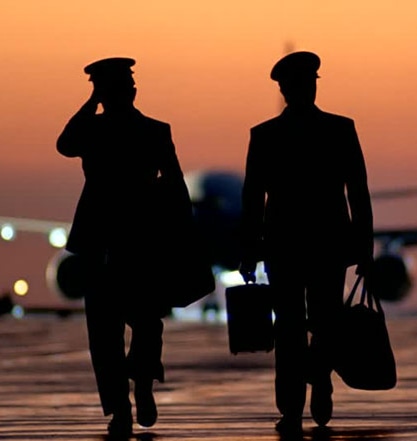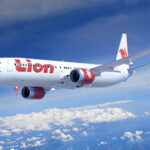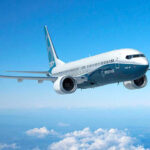Delta Air Lines Mixing Up Widebody Fleet Orders

Delta has announced an agreement with Airbus and Rolls-Royce to add 10 additional Airbus A330-900neo aircraft to its fleet. The order increases total orders by the airline from 25 to 35 of the updated version of the A330. Delta Air Lines expects to being taking deliveries of the A330-900neo next year.
“Expanding our A330 order book not only ensures that Delta’s near-to-medium-term widebody needs are taken care of, but also drives our strategic, measured international growth,” said Gil West, Delta’s Senior Executive Vice President and Chief Operating Officer. “The next-generation engine technology from Rolls-Royce which powers the A330neo provides compelling operating economics, superior fuel performance and the range and coverage for our transoceanic needs going forward.”
As part of the agreement with Airbus Delta is reducing purchases of the A350 in the short term. 10 of the original 25 A350 orders have been postponed to 2025-26 and Delta Air Lines now has flexibility to convert some of the A350 orders into A330-900 orders.
“The A350 has been a great success for our customers and our business,” West said. “A fleet of 15 of these world-class aircraft is the right current fit for Delta’s industry-leading global network, operational reliability and award-winning products and services.”
The Airbus A330-900neo is part of Delta Air Lines fleet update and expansion plans that include the purchase of new 737-900ERs, Airbus A321s, Airbus A220s, as well as the additions of the A330s and A350s. Airbus has said the new A330 additions will at least partially be used to replace outgoing Boeing 767-300ERs. Delta says the new A330 variant will save 20 percent in operating costs per seat mile over the 767s they will be replacing.
Derivative of Proven Airplane
The Airbus A330neo (“neo” for “New Engine Option”) was launched 14 July 2014 in response to airline industry requests for a medium-range wide body airliner with fuel burns similar to the Boeing 787 and Airbus A350.
An analysis by the CIT group shows that in the 250-300-seat market the A330neo enables profitability on shorter ranges where the longer-range A350 and Boeing 787 aren’t optimized. Estimates of the A330-900neo are that it will have operating costs similar to the Boeing 787-9 but with a 25% lower purchase price.
The new A330neo’s variants share 95% parts commonalty with previous A330s and will feature new Rolls-Royce Trent 7000 engines, new winglets similar to the A350 design, and a redesigned front windscreen. The A330neo’s will also feature an updated cabin design that includes Airbus’s new Space-Flex and Smart-Lav systems and will be able to hold more passengers through more efficient designs.
| Airbus A350-900 | Airbus A330-900neo | Boeing 767-300ER | |
|---|---|---|---|
| Passengers | 306 | 281 | 211-226 |
| Max Takeoff Weight | 617,295 lbs | 553,000 lbs | 412,000 lbs |
| Range | 8,400 nm | 7,200 nm | 5,980 nm |
Changes in Pilot Jobs at Delta Air Lines
With a change in fleet planning Delta Air Line pilot positions will change. Available A330 pilot positions will increase while 767 pilot positions decrease. Additionally, there will be a delay in available positions for the A350 – which is near the top of paid positions for pilots at Delta Air Lines. Additionally, pilots will need to be aware of shifts in where the jobs will be available as different fleet types are often crewed out of different crew bases (domiciles).
Listed below is a comparison of current Delta pilot pay scales for the aircraft involved in the wide body fleet changes. Pilot pay is tricky to figure out, but a general rule is to multiply the hourly rate by 1,000 to get a ball park estimate on yearly take home for pilots.
| Year | A350 Captain | A350 First Officer | A330-900 Captain | A330-900 First Officer | B767-300 Captain | B767-300 First Officer |
|---|---|---|---|---|---|---|
| 12 | 330 | 226 | 317 | 216 | 277 | 189 |
| 11 | 328 | 224 | 314 | 214 | 274 | 187 |
| 10 | 325 | 222 | 312 | 212 | 271 | 184 |
| 9 | 322 | 219 | 309 | 209 | 268 | 181 |
| 8 | 320 | 216 | 307 | 207 | 266 | 180 |
| 7 | 318 | 211 | 304 | 202 | 264 | 176 |
| 6 | 315 | 206 | 302 | 197 | 262 | 171 |
| 5 | 313 | 201 | 300 | 192 | 260 | 167 |
| 4 | 311 | 196 | 297 | 188 | 258 | 163 |
| 3 | 308 | 191 | 295 | 183 | 256 | 159 |
| 2 | 306 | 163 | 293 | 157 | 254 | 136 |
| 1 | 303 | 86 | 290 | 86 | 251 | 86 |
Greg started his professional pilot journey in 2002 after graduating from Embry Riddle. Since that time he has accumulated over 8,000 hours working as a pilot. Greg’s professional experience includes flight instructing, animal tracking, backcountry flying, forest firefighting, passenger charter, part 135 cargo, flying for a regional airline, a national low cost airline, a legacy airline, and also working as a manager in charge of Part 135 and Part 121 training programs.



